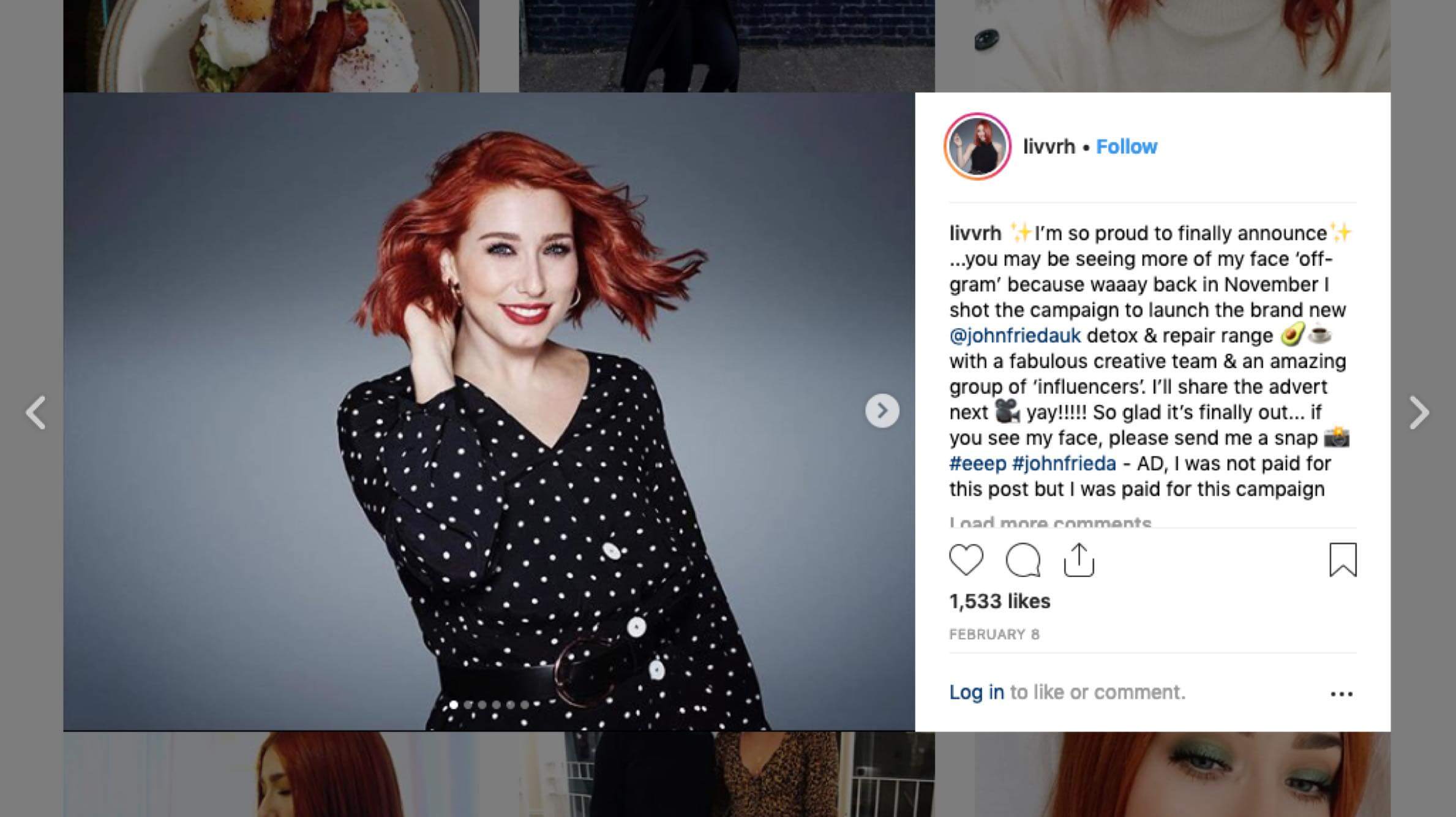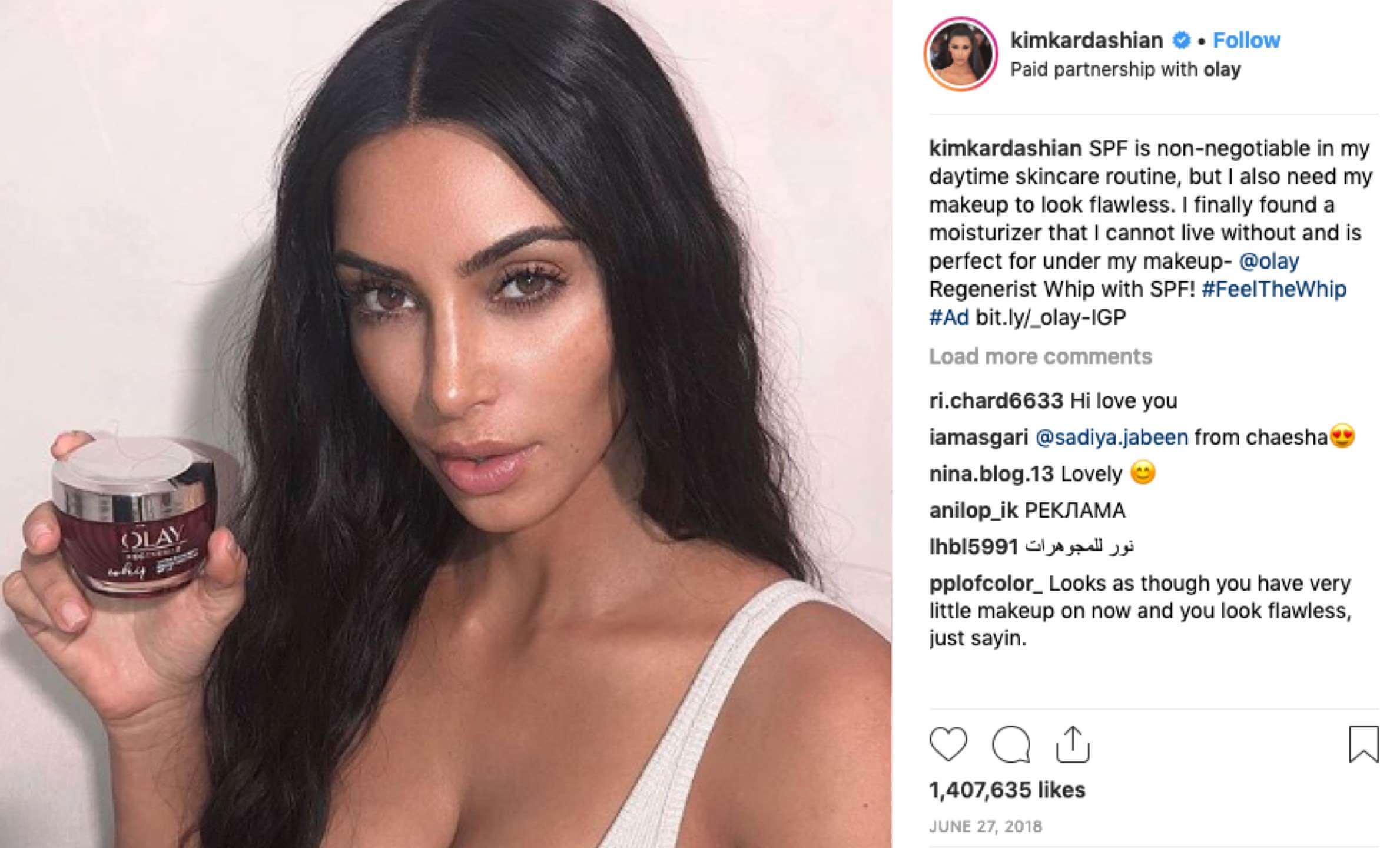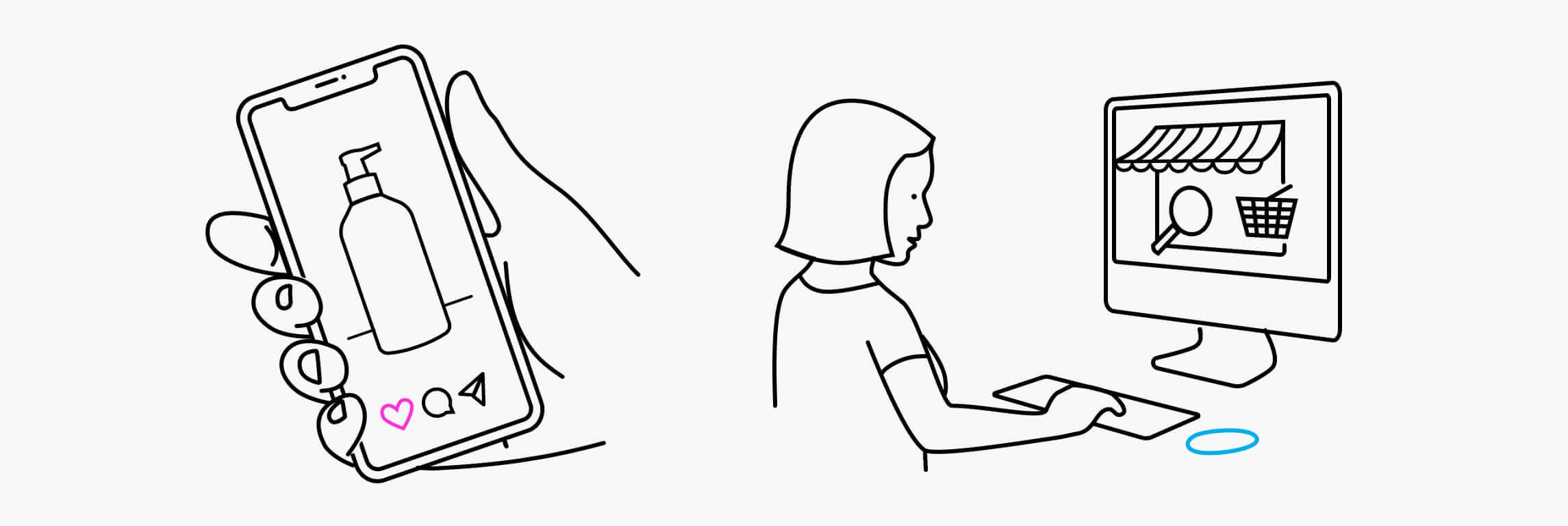What is influencer marketing?
Think of influencer marketing like old school TV advertising, where you choose a celebrity that embodies the values of your brand to endorse your product. The difference is that an influencer may already have the trust of a targeted, engaged audience.
An influencer is a person with the ability to influence potential buyers of a product or service through promotions and recommendations via their chosen social media platforms. This could take the form of sponsored blog posts, images or videos on platforms including Twitter, Instagram, LinkedIn and more.
Influencer marketing is important for building relationships with those who are followed and trusted by your target audience. If you can get an influencer to publish your content or talk about your product without payment, that’s what we call earned media.

Developing relationships with third-party experts gives you access to market expertise and knowledge that can be leveraged via both paid and unpaid partnerships.
Having relationships with influencers can help build brand credibility, achieving broad exposure, as well as media and social media coverage. This expands the reach of your messaging even further. The creative exchange of content and ideas adds extra value to the campaign too, as the content is usable for both the influencer and the brand.
The process can work in a number of ways, such as by paying the influencer to promote your product, offering products to them for free or offering exclusive access to your content. The latter approach helps strengthen their influence in that niche, which boosts their profile as well as yours.
Influencer marketing is a great brand awareness strategy which should form part of a holistic approach to digital marketing — working in tandem with other activities such as press releases, outreach to publications or PPC campaigns.
Honesty and authenticity are essential in influencer marketing, as you want your products or services to resonate with an audience. This transparency makes the activity far more credible and useful than any advert you can promote on your own profiles.
Types of influencer
Micro
A micro influencer is a ‘regular’ person with less than 10,000 followers and a high engagement rate (25% - 50%). They tend to have a keen eye for photography and create beautiful imagery, videos or pieces of content.

We tend to work with this group because of the higher engagement rates they can command. The majority of these also have blogs, which allows for multichannel campaigns at a relatively low cost to our clients. Depending on the quality of the blog, gaining a link from their website can also add SEO value.
This group of influencers may freely (organically or without payment) engage with a brand if it is a product they believe in, a brand they love or is something that would boost their profile. This again makes this channel a cost-effective route to take.
They tend to work on specific briefs from brands to increase engagement rates and awareness. Because they have a relatively small following, they can engage on a much more personal level. Their following tends to be genuinely interested in their opinion, which can have a big sway on users’ opinion of your brand and push them to take action now.
A micro influencer’s personality, beliefs and authenticity are what makes them highly engaged with and an effective way to promote your product.
Macro
This group of influencers have a much larger following and may be celebrities in their own right, but with less than 25% engagement rate. They tend to have a specific topic that they specialise in, such as travel, fashion, business or lifestyle.

The brand exposure from this activity is much larger and targets an engaged audience, making it a cost-effective way to reach more people than a micro influencer, without having to approach the highest-profile A-listers and celebs.
Businesses tend to approach these people to work on big campaigns or new product promotions, which we’ve seen work really well for our clients like Learning Resources.
On one campaign we worked with RedTedArt, an influential craft blogger, to produce an evergreen piece of content about Christmas lacing cards. This was published on their blog and social channels, reaching her 422.6k followers on Pinterest, generating 890 pins and 554 shares on Facebook. The campaign also generated natural backlinks too.
Macro influencers are experienced at dealing with brands and will normally be paid for their promotions. You can be more specific with your campaign ideas and direct the creative approach a bit more with these influencers, helping to protect your brand.
Unique offer codes can really help prove the ROI on these types of campaigns, as you can track the amount of purchases made with this unique code. Codes are often used for micro influencers too, especially if they are working for free, as they feel like they're giving back to their audience.
Power/Celebrity
We’re talking the Kardashians, Zach King or Huda Kattan. These influencers have massive followings on social media channels and can cost up to $500,000 per campaign.

If you want to reach millions of people with your brand, this is the (expensive) way to do it.
Their audience may not be as engaged, but the sheer volume of people that would see your product via celebrity influencers can be highly beneficial. Your own following should increase, engagement rates will spike and sales might too.
A report from Econsultancy suggested that these high rates of pay for influencers may come to an end in the future, due to brands struggling to prove the ROI. At such an extortionate cost, brands can’t afford to not know how this is affecting their revenue. This is why our approach tends to focus on micro and macro influencers.
Vuelio’s report found that 24% of bloggers believe that blogs will be shaped by advertiser’s needs and audiences becoming more sceptical of their motives. This is in spite of bloggers believing their audience will continue to view them as independent.
It is interesting to see how bloggers themselves believe there are bold changes on the horizon for the influencer market.
How are influencers regulated
There’s been some bad press about influencers in recent months, but there are regulations in place to ensure clarity and fairness for followers. We ensure influencers we have and work with are open to their followers about working with brands.
Social media platforms are also stepping up their game to clamp down on fake followers and sponsored content. Fake profiles are being removed by social networks, reducing the follower numbers of some influencers and reducing engagement rates.
The Advertising Standards Agency (ASA) has put regulations in place for influencer marketing, ensuring that any kind of payment is highlighted (whether in freebies or money), as well as any editorial control of content. This activity “must be obviously identifiable as such”.
Basically, if an influencer has been paid or the content has been controlled by a brand, there needs to be a label marking it as an advert. Labelling posts as sponsored is riskier according to the ASA guide, as “they don’t tell the full story and don’t go quite far enough to make it obvious that it’s advertising.” Hashtags, captions, tags are all commonly used to make it clear.
Why and how we work with influencers
We are working with influencers on a daily basis, matching them with our clients for different campaigns. It is important for brands and industry leaders to build relationships with influencers who can reach your target audience.
Our methodology utilises a combination of micro and macro influencers, alongside an outreach strategy which targets relevant publications with well-optimised onsite content. Depending on client budgets, promoted social media campaigns or PPC can support influencer marketing further.
Influencers offer a unique opportunity thanks to their targeted and engaged audience, their respect with this audience and the massive reach that they can achieve with a single image, video or blog. It is an effective and powerful strategy, especially when used to launch new products and services.

This shouldn’t be seen as a short term or one-off plan. Instead, relationships with the influencer, or influencers that you use, should be built upon and continued. Credibility and reputation will build because of your continued collaboration and association with the influencer.
It’s worth noting that brands can actually help influencers to grow too. We are always on the lookout for the next big persona, in a multitude of industries and specialisms. They may not be as large as other influencers, but if you can see their potential, your brand can grow with them if you work together early enough — a highly cost-effective way to partner with influencers.
Denim brand Diesel has recently changed up their whole influencer marketing approach. They’re offering discounts for anyone who signs up to their SIDE:BIZ reward scheme.

They provide each user with a unique link, which they can share on their social media posts, emails or blogs. For each person that clicks through from that link and buys something, the influencer is rewarded with points which can be converted into discounts, free products or one-off experiences in return.
It’s an interesting twist in the evolving influencer marketing strategy and one that may just pay off and make proving ROI easier.
When contacting influencers to work with a brand, your messaging needs to stand out. You should do your research on their brand and audience. This will help you craft your pitch to work together—they’ll need to know that you’re genuine and that your offering is useful not just to them, but to their followers too. Blanket, template emails won’t get you the influencer you really want.
Nurturing any relationship from the offset is paramount to the success of a campaign, so make your messaging personal, targeted and relevant to their values. This will increase your chances of them taking an interest in what you have to offer.
Proving ROI
Proving ROI is essential to any marketing strategy — every activity is scrutinised. There are plenty of ways to measure the success of influencer campaigns — you just need to know what to measure.
Traditional advertising measurements for ROI are not necessarily the right fit for influencer marketing, which is why you should take a bespoke approach. Choose the metrics which fit your campaign’s KPIs — followers, engagements, referral traffic, conversions, video views, backlinks, brand mentions. This will help define the type of influencers you work with.
Using tracking URLs, unique discount codes, shoppable links or conversion pixels help you to attribute results to the exact campaign, but you also need to consider the impact they have had on potential customers. These are people who have seen the ad, but not yet converted.
These people may convert further down the line, so assigning a value to engagement stats, follower numbers and link clicks will help prove ROI. Find out the cost for each of these to help back up the value of this influencer campaign.
The key to good influencer marketing is knowing your audience, setting your KPIs and understanding the metrics to evaluate the performance of your campaigns. If you can do all of this, within your budget, you should see some fantastic results.


